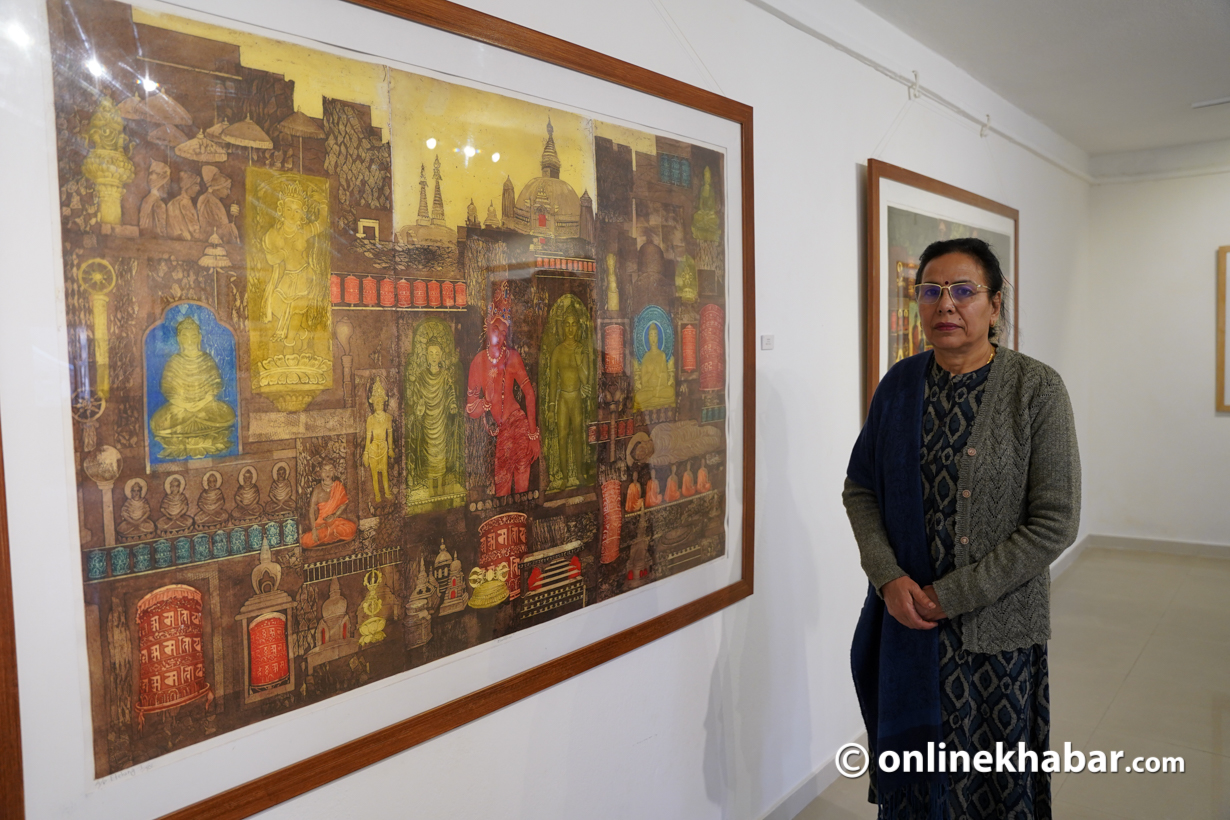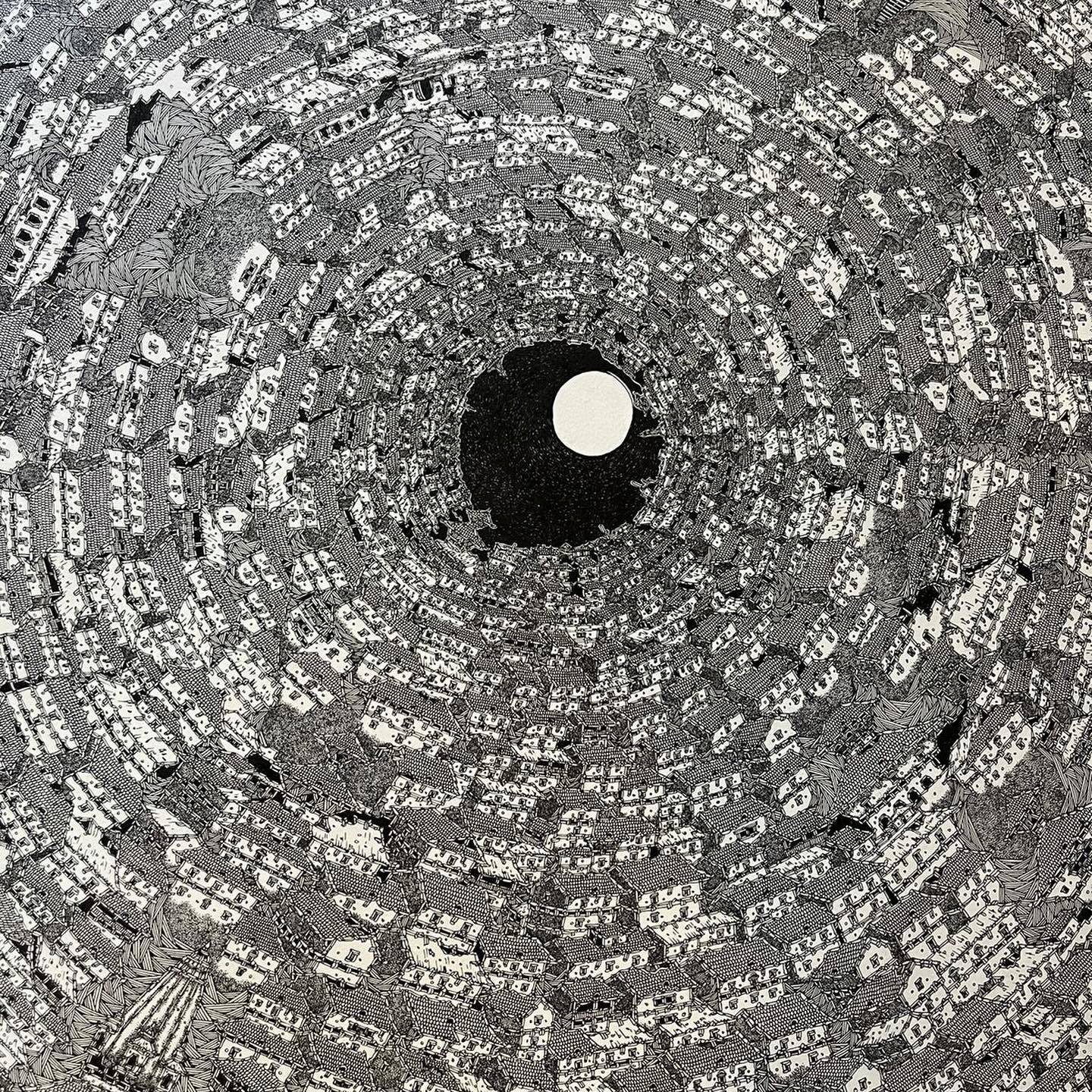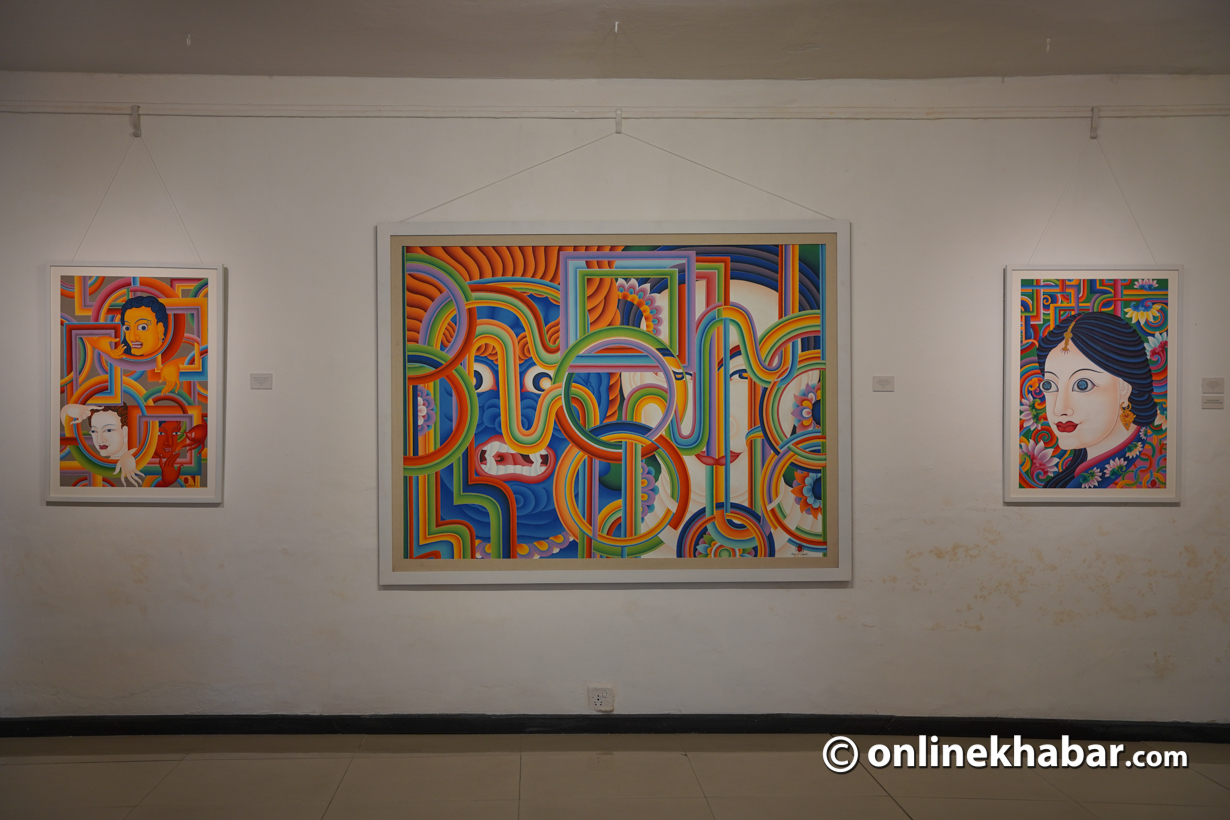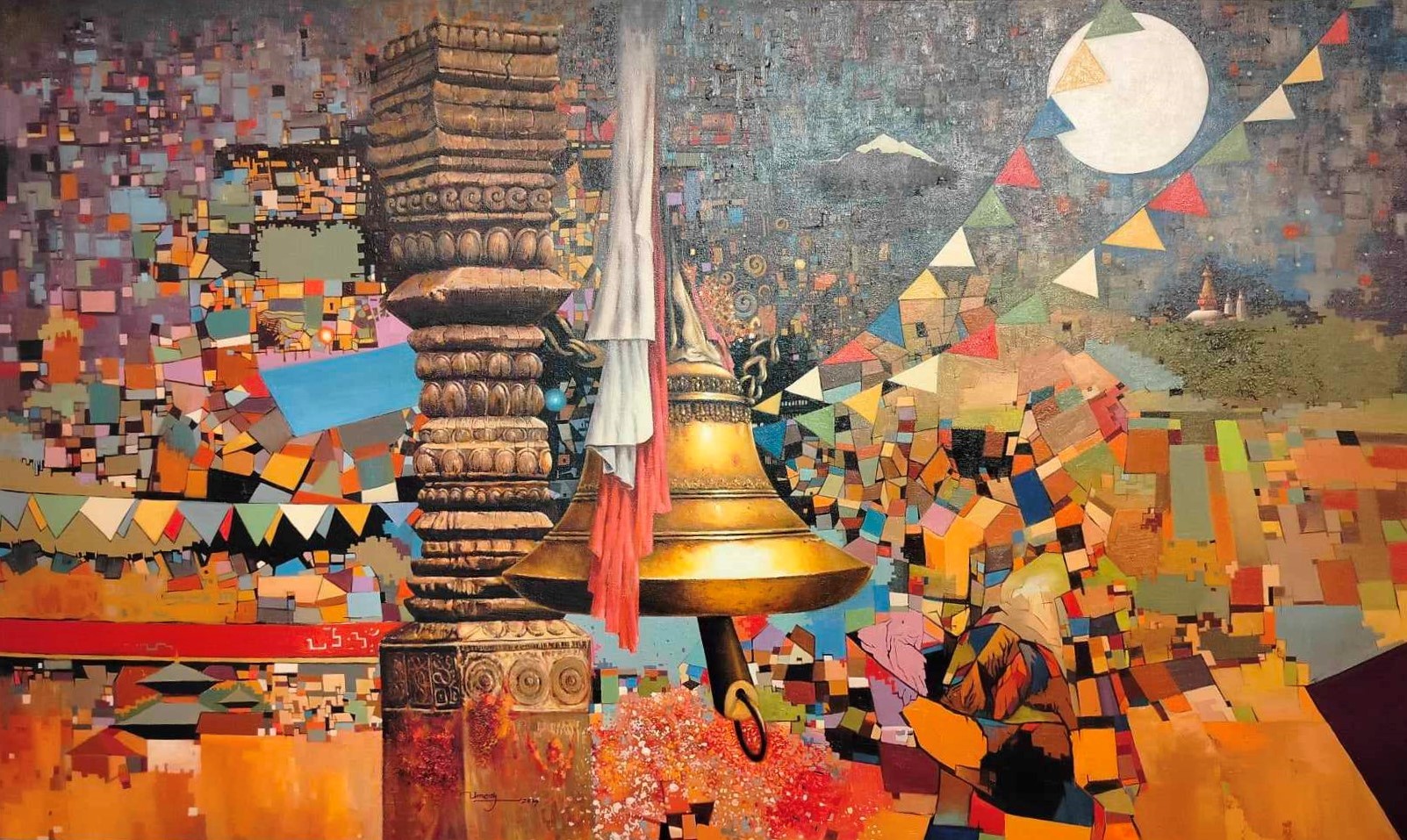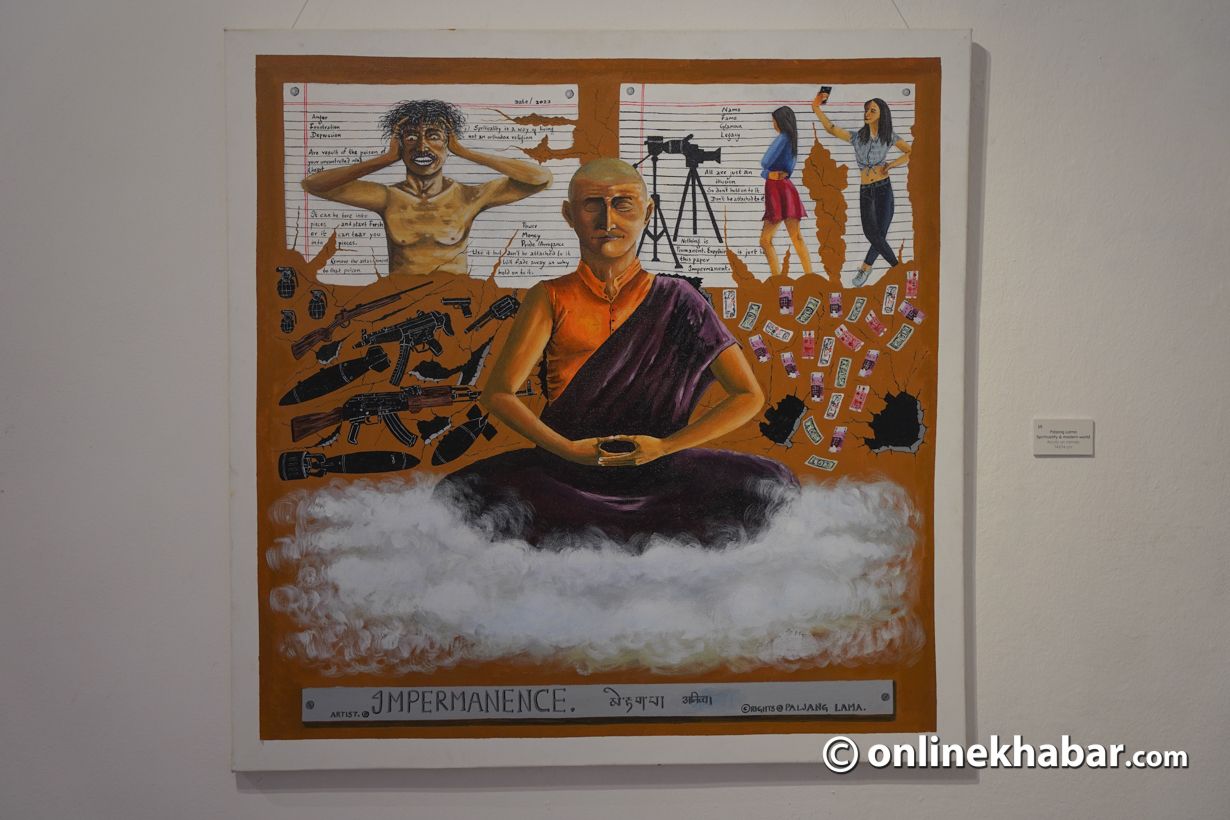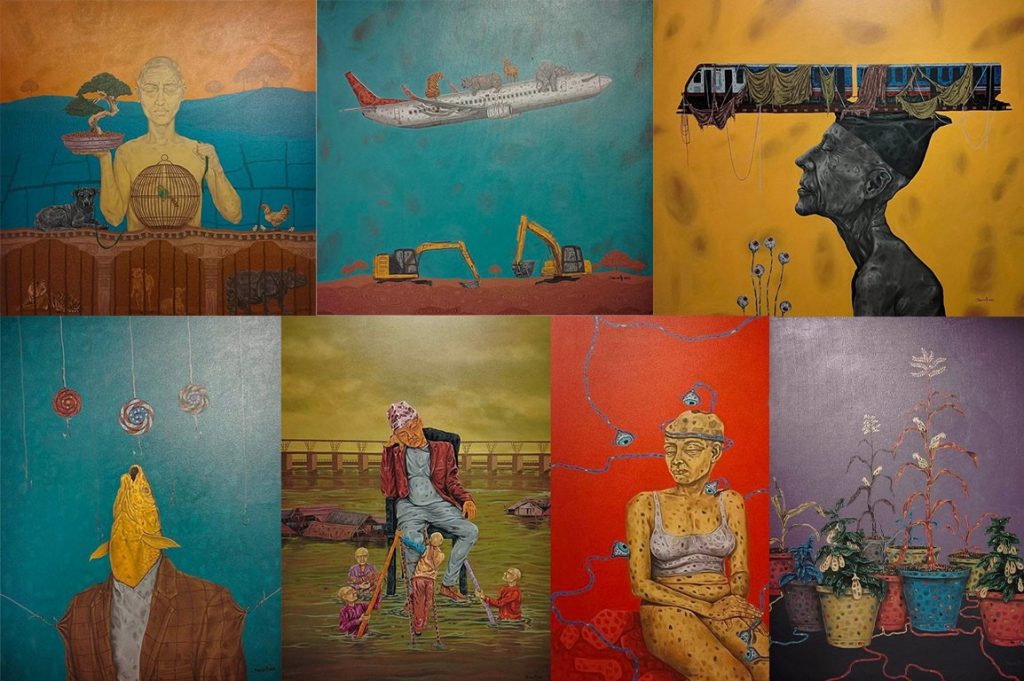
Artist Suresh Basnet’s first solo painting exhibition, Galpa: Episodes in My Life, began on December 27, 2022, at Siddhartha Art Gallery, Baber Mahal.
The exhibition by the recipient of the Himalayan Light Art Award features paintings and drawings made between 2019 and 2022 that he says are the sum total of his perceptions, emotions and experiences, which are the reflection of the realities that exist today.
He has used the motifs of eyeballs, bald people, donkeys and more in his paintings. Then, there is a repetitive circular pattern on the body of creatures–humans or animals–which gives a new texture to his painting along with a sense of deterioration.
Overall, Suresh Basnet focuses on things and the events being deteriorated around him. It appears at the exhibition continuing till January 17 that his art is a satire on the present socio-political context and people’s attitudes towards technology and nature.
Satire on politics and technology

Of several paintings exhibited, Suresh Basnet has a special set of three, named Satiated State, Drowned in Contemplation and Anxious State. The artist says these paintings depict the condition of politicians in power.
The setting of all three paintings is the same; just the colours of the character and the expressions are different. In all of them, there is a room decorated with a carpet and a huge golden chair with two Nepali flags kept on each side. To your surprise, a donkey is sitting in the chair in each of them.
“It is the satire on the politicians; no matter who reaches the position, upon gaining power, they all become the same,” he says, “Power-hungry, they all have vested interests above their assignment to work for the people.”
Likewise, Suresh Basnet has ridiculed the nature of humans absorbed in using technology such as cell phones. According to him, technology has both positive and negative impacts on people and the eyeballs in his painting depict the human’s eyes gazing at the user of the technology and things shown through the technology. “The eyes can be the eyes of an admirer or those who are disgusted by the users of technology,” says Basnet.
The grief
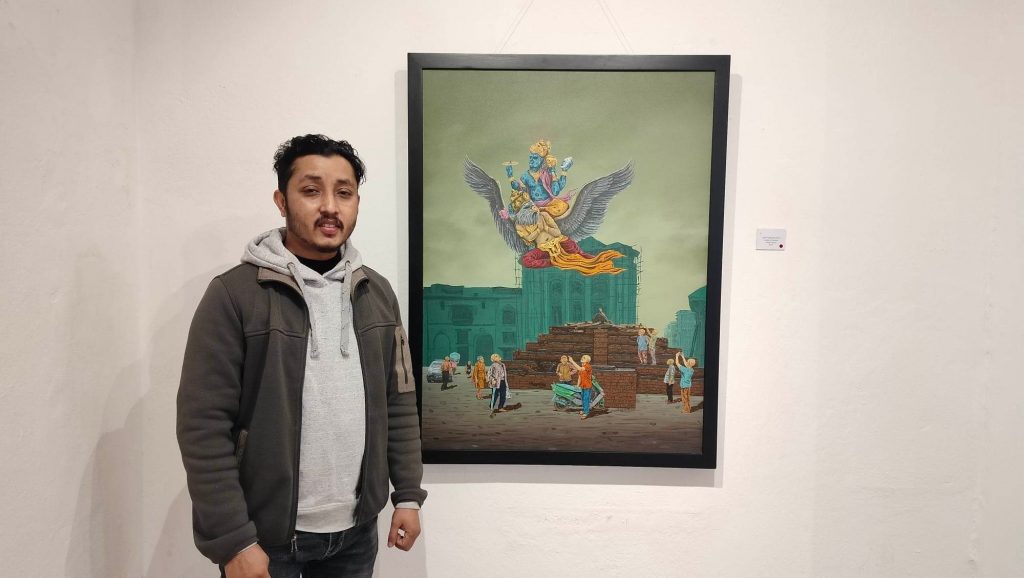
But, Suresh Basnet is not only about satires. In a painting using acrylic on canvas, titled April Earthquake 2015, he has depicted Lord Vishnu and his vehicle Garud leaving the temple. They are seen leaving with grief as the temple and the place have turned to ruins due to the 2015 earthquake.
He has realistically presented the scenario and one can relate to the pain seen in the eyes of the gods as well as the people in the painting. In the painting, one can see the setting of Basantapur, where the Laxmi Narayan temple has turned into rubble. A few people are seen around the temple, and they are devastated to see their god fly away.
The painting is so striking that it reminds the viewers of the 2015 earthquake that took away thousands of lives and millions of survivors homeless. He says, “My paintings fuse reality with imagination to narrate the stories of pain both of an individual and of a community.”
This painting also received a consolation position at a recent national exhibition held by the Nepal Academy of Fine Arts.
Overall impression
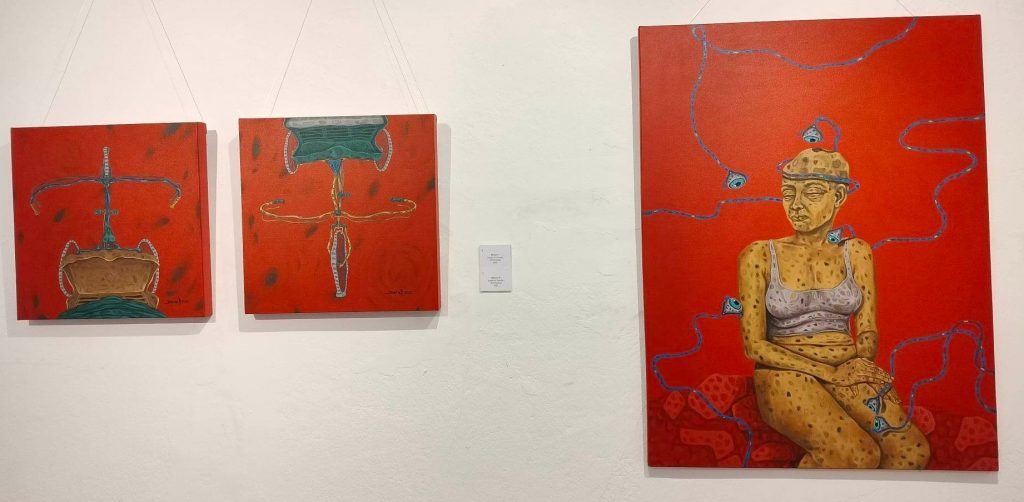
Suresh Basnet, 32, an art educator by profession, finds that he has been able to sustain himself in the art field easily in comparison to his seniors. “I feel lucky being in the art fraternity now as I got the guidance from my seniors and also platforms that helped me give exposure,” says Basnet.
Art gives him satisfaction and he feels like he has been born to do the painting. Basnet in his college days was heavily influenced by surrealistic artist Salvador Dali and Nepali artists Rajan Pant, Jasmin Rajbhandari and Sunil Sigdel. On closer inspection, his paintings do have a few essences of these artists through the use of vibrant colours and techniques.
Summing up the exhibition, founder/director of Siddhartha Art Gallery Sangeeta Thapa says, “Basnet’s works are a reaction to the immediate socio-political reality of his time and his paintings recount episodes of incidences that have touched his psyche.”
“These dark works prompt us to look at ourselves—as people and as leaders and acknowledge our foibles before it’s too late,” says Thapa.




